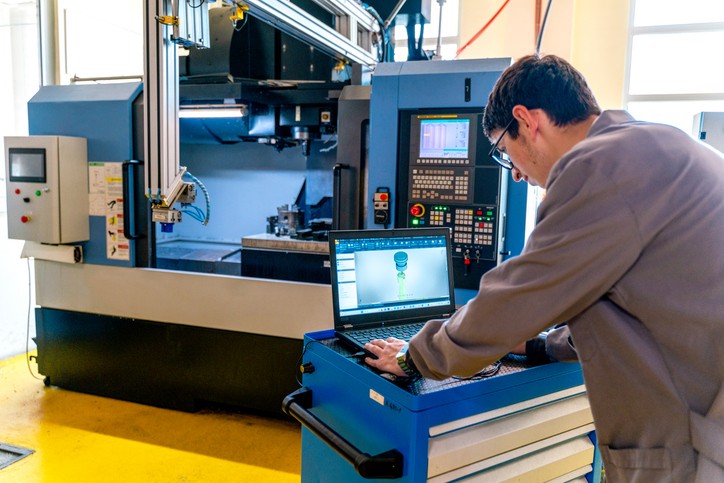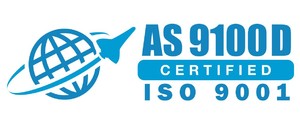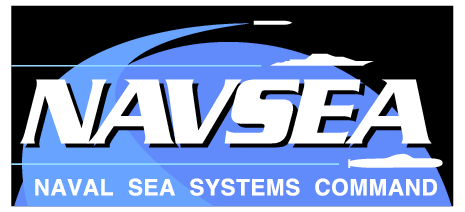In modern design and engineering, it’s often important to be able to iteratively and rapidly innovate. To do so, it’s frequently helpful to be able to quickly generate workable and sometimes functional prototypes that enable you to turn designs into tangible objects that can be analyzed, tested, and shown to stakeholders as proof-of-concept. That’s where CNC rapid prototyping comes in.
What is CNC Rapid Prototyping?
CNC refers to computer numerical control — a framework that enables the use of computer-aided design (CAD) in fabricating components, parts, and products. It refers to the practice of using CNC and CAD to quickly create prototypes based on digital designs. It’s emerged as an essential part of how, in modern design and engineering, teams can quickly put together prototypes, significantly aiding in the development process.
Organizations utilize CNC rapid prototyping to aid in development, add flexibility, and meet specs. It enables us to quickly and flexibly deliver high-quality products to specification.
Advantages of CNC Rapid Prototyping in Design and Engineering
There are several potential benefits to CNC rapid prototyping in design and engineering. Among them, some of the most important include speed, accuracy, and flexibility. These contribute to the ability to innovate rapidly and efficiently in engineering.
Speed
By being able to rapidly produce prototypes using computer-aided design and CNC machining, it’s often possible to speed up the entire timeline of production. When prototypes can be produced more quickly, so too can problems be identified more quickly.
Accuracy
Being able to quickly generate working, and tangible prototypes can aid significantly in accuracy, enabling engineering teams to present prototypes with stakeholders for feedback, ensuring a high degree of accuracy to the intended goal.
Flexibility
Since it enables engineering and design teams to quickly produce prototypes for feedback and testing, it also aids in flexibility, enabling teams to more quickly identify issues, garner vital feedback, and make changes as needed.
To better understand, let’s look at an example. Suppose that a client requires an innovative component, one which doesn’t yet exist. To meet their needs, this component must be able to perform several crucial functions.
To ensure that the engineering team is on the right track, prototypes can be rapidly produced and tested to ensure that the component can fill these functions. If not, the design team, now with more data, can quickly adjust to ensure that they meet product specifications in time.
CNC Rapid Prototyping in Various Industries
CNC rapid prototyping is used in a range of industries. Since it allows for rapid testing and feedback, this process can be pivotal in a range of capacities. At NAMF, we’ve seen this firsthand, having catered extensively to the unique needs of these industries.
Automotive
Rapid CNC prototyping can be crucial in the automotive industry, where companies must create competitive products that meet high-performance expectations while simultaneously adhering to stringent quality and safety standards.
Medical
In the medical industry, where the design of devices can have a significant impact on patient incomes, meeting design specs carefully is crucial. It also plays an important role, enabling engineering and design teams to create high-quality, functional medical products with lower lead times.
Consumer Products
When consumer products are made for mass production, much is at stake. To ensure that consumer products are functional, meet vital safety requirements, and adhere tightly to consumer protection laws, CNC rapid prototyping can be a critical practice, allowing for extensive testing without creating nonviable lead times.
The Process of CNC Rapid Prototyping at NAMF
At NAMF, we regularly utilize CNC rapid prototyping to more effectively deliver products to our clients and customers. With a commitment to meeting client specifications within their own timelines, it’s crucial that we’re able to rapidly produce prototypes so that we can ensure quality and precision in each product.
At NAMF, CNC rapid prototyping enables us to meet these goals, not only delivering products in a timely manner, but ensuring that they’re designed accurately to specifications.
Material and Technology Choices in CNC Rapid Prototyping
There are many materials that can be rapidly machined to create prototypes, including:
- Metals: such as aluminum, steel, titanium, and brass
- Plastics: such as polycarbonate, polypropylene, and nylon
- Composites: such as carbon fiber reinforced plastic
Additionally, cutting-edge machining techniques aid in rapid prototyping. These can include:
- Multi-axis machining: This leverages additional axes to create highly intricate designs without the need for frequent reseating.
- CAD: This enables the rapid creation of designs that can be machined with CNC tools.
- High-speed machining: this can increase the speed at which parts can be machined, leading to faster production times.
With a commitment to selecting the best materials and technology for each project, at NAMF, we employ a range of cutting-edge techniques, including multi-axis machining, and the use of advanced materials.
Overcoming Challenges in CNC Rapid Prototyping
Some common challenges include:
- Finding the right materials: Finding the appropriate materials from which to create a prototype can be a challenge. Some materials are more conducive to machining than others, particularly rapid machining, so this can be a vital consideration. That’s why at NAMF, we utilize the highest quality materials, with a strong commitment to creating accurate, high-quality products.
- Meeting design constraints: some designs, particularly highly complex ones, can be difficult to machine. Multi-Axis machining and other cutting-edge machining techniques used by NAMF may be important for meeting this challenge.
- Costs: It can be expensive, necessitating costs for materials, tools, and even software. At NAMF, we believe these costs are fully justified since they allow us to deliver high-quality products on our clients’ timelines.
The Bottom Line
In today’s increasingly fast-paced world, the speed of innovation is often crucial. To quickly meet the needs of clients and create products that meet specifications, rapid prototyping can be vital.
Rapid prototyping enables design and engineering teams to quickly actualize designs, test them for safety, functionality and design, and present them to stakeholders for vital feedback. This process can allow for speed, flexibility, and accuracy, and can be vital across a range of industries, including the automotive industry, aerospace industry, medical industry, and in producing consumer products.
At NAMF, we know all too well the importance of CNC rapid prototyping, as it enables us to deliver high-quality products that meet client specifications in optimal timeframes.
Remember, if you have rapid prototyping needs, at NAMF, we’re experts in CNC rapid prototyping. With a range of cutting-edge technologies that we employ, a commitment to excellence, and the use of the highest quality materials, we’re here to help.





